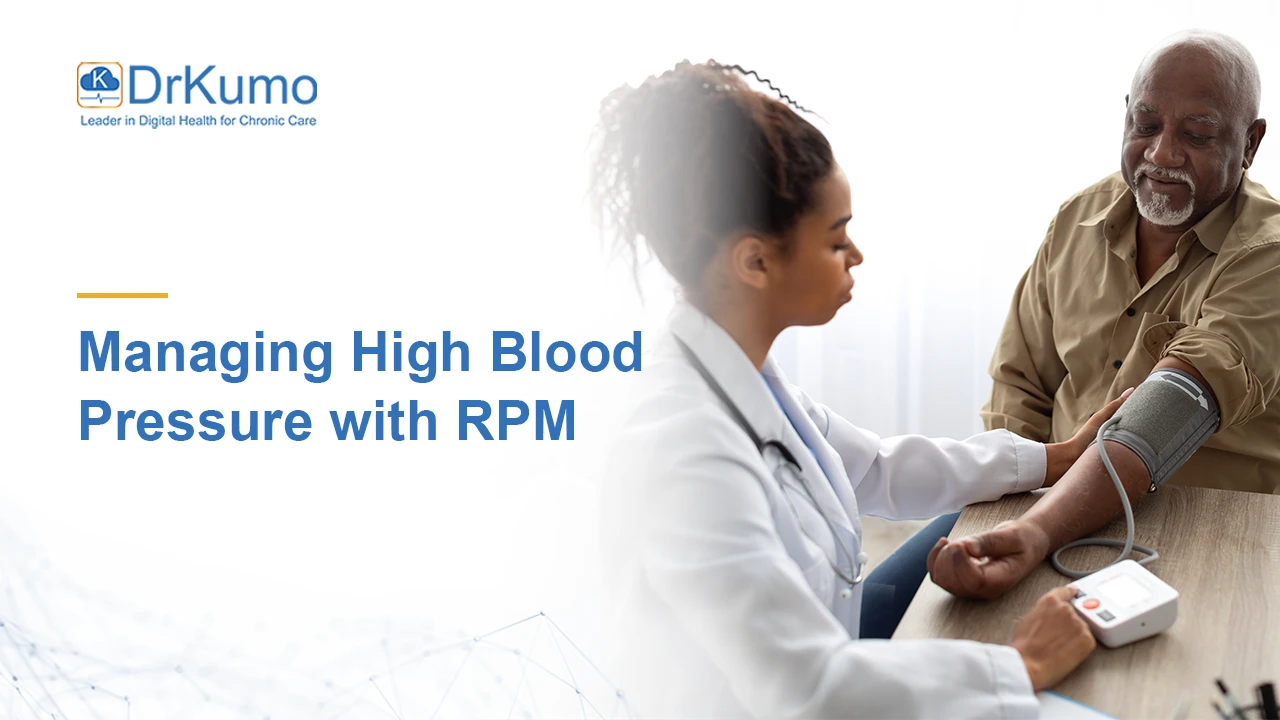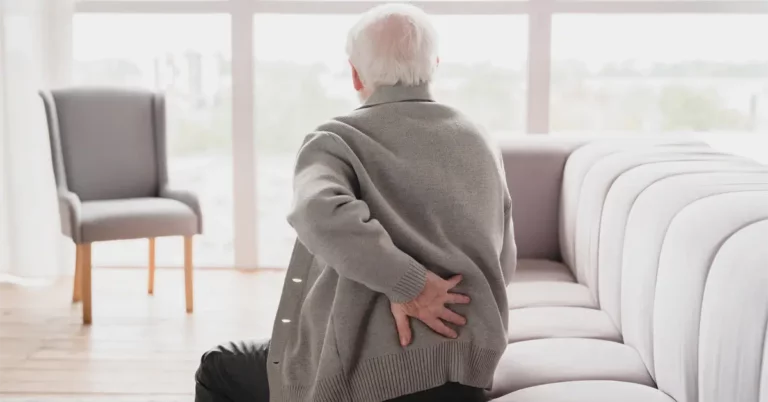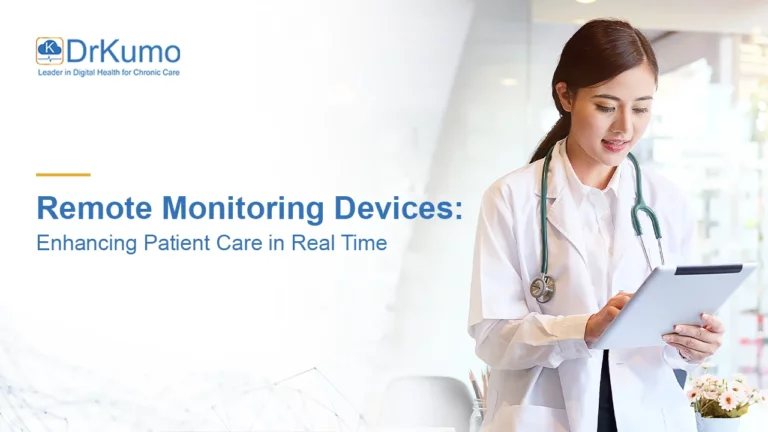Managing high blood pressure, or hypertension, has long been a concern for patients and healthcare providers alike. High blood pressure, often termed the “silent killer,” poses severe risks if not managed properly, potentially leading to heart disease, stroke, and other critical conditions. Remote Patient Monitoring (RPM) offers an innovative solution by allowing patients to manage and monitor their blood pressure in real-time. RPM helps patients make more informed lifestyle changes by providing valuable data on their health trends by tracking vital data and maintaining healthier habits that lower blood pressure. Here’s how RPM can help manage hypertension effectively.
Understanding High Blood Pressure and its Risks
High blood pressure or also known hypertension is when your blood vessels are too high. A reading of 130/80 mm Hg is defined as stage 1, while 180/120 mm Hg or higher is classified as a hypertensive crisis, indicating that the heart is working harder than normal to pump blood through the body. This condition can damage arteries, leading to heart attacks, strokes, and kidney disease. Traditionally, hypertension management relied on periodic visits to healthcare providers, making consistent monitoring a challenge for many.
What is Remote Patient Monitoring (RPM)?
Remote Patient Monitoring (RPM) utilizes healthcare technology to monitor patients’ vital signs, including blood pressure, from their homes. Using devices like blood pressure cuffs connected to mobile apps or healthcare systems, patients can transmit real-time health data directly to their care team. This continuous flow of information enables providers to monitor blood pressure trends, offer timely interventions, and guide patients in lifestyle adjustments. With RPM, patients become more engaged in their own care, which can lead to better long-term outcomes.
Benefits of RPM for Managing High Blood Pressure
Remote patient monitoring provides a convenient way for patients to stay informed about their health and make proactive changes. Here are some of the primary benefits RPM brings to hypertension management:
1. Real-Time Data Collection and Analysis
Unlike traditional methods, RPM collects data in real time, giving healthcare providers a more accurate view of a patient’s blood pressure trends. This allows for timely interventions when readings are elevated, reducing the risk of complications. Real-time data and continuous data collection enables healthcare providers to get valuable insights, helping patients to tailor more treatment plans and adherence to medication more effectively.
2. Personalized Health Insights and Recommendations
This empowers patients to understand how lifestyle choices impact blood pressure. For instance, a patient can see the effect of diet, exercise, and stress levels on their blood pressure trends through RPM data. Many RPM platforms utilize AI-driven insights, helping patients with a clearer understanding of their health trends.
3. Convenience and Reduced Clinic Visits
Traditional hypertension management often requires regular doctor visits, which can be inconvenient for patients with limited mobility, transportation challenges, or time constraints. Remote Patient Monitoring can reduce the need for in-person appointments by providing continuous monitoring, reducing the number of unnecessary trips to the clinic.
4. Improved Patient Engagement and Compliance
The ease of using RPM encourages patients to stay more engaged with their treatment plans. Seeing their health data in real-time can motivate patients to adhere to medication, improve dietary habits, and exercise regularly. Studies from American Heart Association show that higher patient engagement directly correlates with better health outcomes and adherence to treatment plans.
5. Early Detection and Intervention
Continuous monitoring allows healthcare providers to identify elevated blood pressure early, potentially preventing emergencies. When patients monitor their readings consistently, doctors can adjust treatment promptly, making RPM a proactive solution for hypertension management.
Tips for Lowering Blood Pressure with RPM Support
While RPM enables effective monitoring, lifestyle modifications remain crucial for managing high blood pressure. Here are some actionable tips, supported by RPM, to help maintain healthy blood pressure:
1. Incorporate Heart-Healthy Foods
A diet rich in vegetables, fruits, whole grains, and lean proteins supports cardiovascular health. Patients can use RPM data to see how dietary changes impact their blood pressure. Foods high in potassium, such as bananas and leafy greens, are particularly beneficial as they help to balance sodium levels in the body, further reducing hypertension risks.
2. Exercise Regularly
Physical activity is one of the most effective ways to lower blood pressure. RPM allows patients to monitor the effects of exercise on their blood pressure, offering motivation to maintain an active lifestyle. Activities like brisk walking, cycling, and swimming improve heart health and can reduce systolic blood pressure by up to 10 points.
3. Manage Stress Levels
Chronic stress can elevate blood pressure, so it’s essential to find stress management techniques that work. Meditation, yoga, and breathing exercises are effective ways to calm the mind and reduce hypertension. Some RPM platforms even provide tools for monitoring stress levels and sleep patterns, giving patients insights into how stress affects their blood pressure.
4. Reduce Sodium Intake
Excess sodium is a known contributor to high blood pressure. With RPM’s real-time monitoring, patients can experiment with lower sodium diets and see how it impacts their readings. Avoiding processed foods, canned goods, and salty snacks while adding flavor with herbs and spices is a simple way to keep sodium intake in check.
5. Stay Consistent with Medication
Medication adherence is crucial for many people with high blood pressure. RPM can remind patients to take their medication and provide immediate feedback on its effectiveness. This accountability helps patients avoid missed doses, ensuring stable blood pressure levels over time.
Hypertension Care Plans
For those managing high blood pressure, RPM can be integrated into care plans with the guidance of healthcare providers, helping patients monitor their blood pressure more effectively. Here’s how to start integrating RPM for blood pressure management:
1. Set Clear Health Goals
With guidance from healthcare providers, patients can establish blood pressure targets and monitor their progress. Setting clear, achievable goals can help patients stay motivated and measure their success over time.
2. Review Data Regularly
Schedule regular check-ins with healthcare providers to review RPM data and make any necessary adjustments. This approach ensures that the treatment plan is always aligned with the patient’s current health status.
The Future of Blood Pressure Management with RPM
Remote Patient Monitoring is transforming how both patients and medical providers manage chronic conditions like hypertension. By leveraging RPM, patients can monitor their blood pressure consistently, engage more actively in their care, and make informed lifestyle changes. Healthcare providers, in turn, benefit from real-time data, enabling them to deliver more personalized and effective care.
As RPM technology advances, it’s expected that even more features will support hypertension management. From artificial intelligence-driven insights to predictive analytics, the future of RPM holds promise for improving patient outcomes and quality of life.
Takeaways
Managing high blood pressure no longer has to rely on sporadic clinic visits and infrequent monitoring. Remote Patient Monitoring offers a proactive approach, enabling patients to take control of their health, make informed lifestyle changes, and work collaboratively with healthcare providers. For those with hypertension, RPM offers a practical, accessible way to improve heart health and reduce the risks associated with high blood pressure, paving the way for a healthier, more empowered future.








